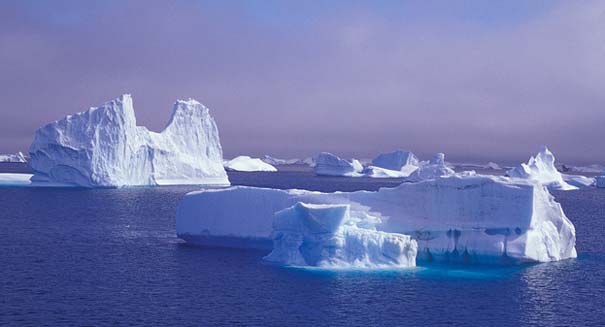
A new study reveals that antifreeze proteins in Antarctic fish that prevent them from freezing in the icy Southern Ocean also prevent internal ice crystals from melting in the warmer, summer waters.
A study published Monday in the journal Proceedings of the National Academy of Sciences reveals that Antarctic fish that produce antifreeze proteins to survive the freezing ocean waters are also suffering an evolutionary paradox: these life-saving proteins also prevent ice crystals inside the fish from melting in the warmer summer waters.
Co-author Arthur DeVries, of the Department of Animal Biology at the University of Illionois at Urbana-Champaign, first discovered antifreeze proteins in Antarctic notothenioid fishes over forty years ago and was the first to explain how the proteins bind to ice crystals in the blood to prevent freezing within the fish.
Researchers of the current study examined if the antifreeze protein-bound ice crystals would melt as expected in warmer temperatures by warming the fishes to temperatures above the expected melting point.
“We discovered what appears to be an undesirable consequence of the evolution of antifreeze proteins in Antarctic notothenioid fishes,” said co-author Paul Cziko of the University of Oregon, in a recent statement. “What we found is that the antifreeze proteins also stop internal ice crystals from melting. That is, they are anti-melt proteins as well.”
According to the statement, the ability of the notothenioid fish to live in the icy seawater of the Southern Ocean is so extraordinary that they make up over 90 percent of the region’s fish biomass. Cziko worked with other divers to maintain a temperature-logging device in McMurdo Sound, Antarctica, to record ocean temperatures for 11 years. Reports indicate that temperatures never increased enough in that time to overcome the antifreeze proteins’ anti-melting effect to remove internal ice in the fish.
“Since much of the ice accumulates in the fishes’ spleens, we think there may be a mechanism to clear the ice from the circulation,” said co-author Chi-Hing Christina Cheng, also of the University of Illinois at Urbana-Champaign.
“This is just one more piece in the puzzle of how notothenioids came to dominate the ocean around Antarctica. It also tells us something about evolution. That is, adaptation is a story of trade-offs and compromise. Every good evolutionary innovation probably comes with some bad, unintended effects.”
Leave a Reply